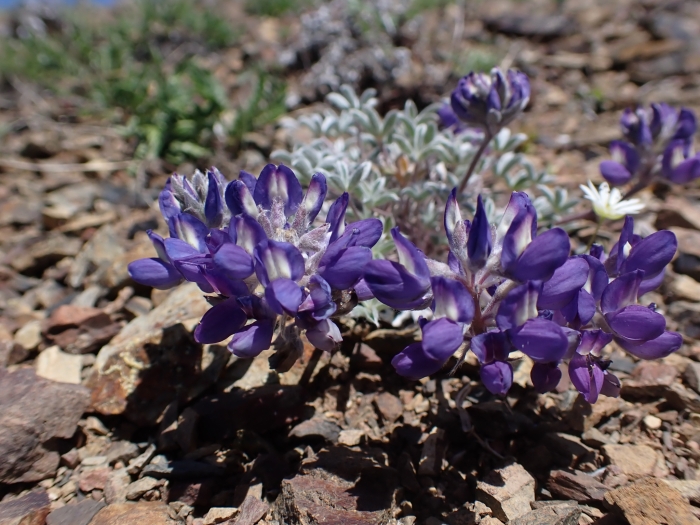Pacific Lupine
(Lupinus lepidus)
Pacific Lupine (Lupinus lepidus)
/
/

Aiva Noringseth
CC BY 4.0
Image By:
Aiva Noringseth
Recorded By:
Copyright:
CC BY 4.0
Copyright Notice:
Photo by: Aiva Noringseth | License Type: CC BY 4.0 | License URL: http://creativecommons.org/licenses/by/4.0/ | Rights Holder: Aiva Noringseth | Publisher: iNaturalist | Date Created: 2023-06-30T14:20:34-07:00 |
























Estimated Native Range
Summary
Lupinus lepidus, commonly known as the Pacific lupine, prairie lupine, or dwarf lupine, is a perennial herb that is native to a variety of habitats including open meadows, grassy slopes, and alpine talus fields in western North America, ranging from Alaska to southern California and eastward to the Rocky Mountains. It typically grows to a height of 4 to 24 inches tall and features basal palmately compound leaves. The plant is characterized by its dense racemes of showy pink, purple, or blue flowers that bloom from mid-April through August, adding vibrant color to the landscape during the flowering season.
Pacific lupine is valued for its ability to adapt to a range of conditions, from low prairie to alpine regions, and for its ornamental flowers that attract pollinators such as bees and butterflies. It is often used in native plant gardens, rock gardens, and restoration projects due to its nitrogen-fixing ability, which enriches the soil. In cultivation, Pacific lupine prefers full sun to partial shade, well-drained soils, and moderate water. While generally low-maintenance, it can be susceptible to fungal diseases in overly moist conditions. Gardeners should be aware that all parts of the plant are toxic if ingested.CC BY-SA 4.0
Pacific lupine is valued for its ability to adapt to a range of conditions, from low prairie to alpine regions, and for its ornamental flowers that attract pollinators such as bees and butterflies. It is often used in native plant gardens, rock gardens, and restoration projects due to its nitrogen-fixing ability, which enriches the soil. In cultivation, Pacific lupine prefers full sun to partial shade, well-drained soils, and moderate water. While generally low-maintenance, it can be susceptible to fungal diseases in overly moist conditions. Gardeners should be aware that all parts of the plant are toxic if ingested.CC BY-SA 4.0
Plant Description
- Plant Type: Herb
- Height: 0.5-2 feet
- Width: 0.5-1.5 feet
- Growth Rate: Rapid
- Flower Color: Blue, Pink, Purple, White, Yellow
- Flowering Season: Summer
- Leaf Retention: Deciduous
Growth Requirements
- Sun: Full Sun, Part Shade
- Water: Medium
- Drainage: Fast, Medium
Common Uses
Bee Garden, Border Plant, Butterfly Garden, Low Maintenance
Natural Habitat
Native to open meadows, grassy slopes, and alpine talus fields in western North America
Other Names
Common Names: Prairie Lupine, Nootka Lupine, Dwarf Lupine
Scientific Names: , Lupinus lepidus, Lupinus concinnus, Lupinus lepidus, Lupinus lepidus subsp. typicus, Lupinus lucidus, Lupinus lucidus,
GBIF Accepted Name: